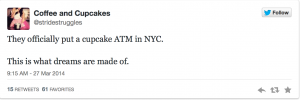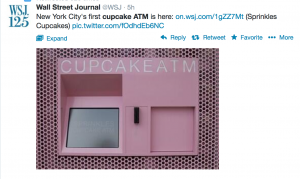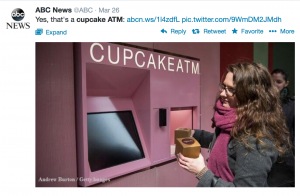By CLARA BENDAYAN
“Wait, wait, wait! Let me take a picture of the sushi before you eat it. My followers are going to love how artsy it looks.”
Sounds familiar, right? Welcome to the age of Microfame and Instafame.
Not sure what that is? It’s simple, really. Social media and internet fame is sweeping the world.
With the influx of social media applications at our fingertips, regular people are becoming overnight celebrities by simply uploading five-second videos to Vine containing their daily shenanigans.
Being a celebrity used to involve the overwhelming process of going through auditions, facing rejection, living on low salary jobs just to pay the rent while you struck gold in Hollywood. Now, however, television and movies aren’t the only platforms that exist, and becoming famous isn’t as difficult as it used to be at least when it comes to social media notoriety.
With this platform, it’s easier to form some sort of connection with social media celebrities as opposed to famous Hollywood actors who rarely are able to reply back. Applications such as Vine, Instagram and Kik give users the option to answer their fans on a personal level.
“It’s a new kind of celebrity landscape because they can also reply back to you and it creates a more intimate connection,” said Jo Piazza, executive news director of In Touch and Life & Style magazines.
A documentary titled “Instafame” is going around Vimeo and it follows the life of Shawn Megira, a 15-year-old from Long Island, N.Y., who has more than 81,000 followers on Instagram.
His mom explains that she’s seen masses of fangirls crowd around him whenever they go out in public, only because they recognize him from his Instagram pictures.
I’ve seen countless Facebook friends post pictures with Instagram or Vine celebrities as well, and it begs the question of how social media fame affects teens and how it will affect them in the long run.
“It’s a very strong high. They’re getting a lot of attention but it’s not fulfilling what they deeply need and want in terms of this kind of human connection,” said Niobe Way, professor of psychology at New York University.
This social media is also creating a sense of validation for many people. Receiving 100 likes on an Instagram picture makes people feel good about themselves and gives them self worth. They feel validated by a group of peers or fans.
Another possible issue is that people seem to be living in the social media moment instead of basking in real life events. We all have at least one friend who cannot go a day without Instagramming a picture of their breakfast. Or another the friend that stops their car on the side of the road (or even worse, snaps a picture while driving) to take a picture of the sunset because they know that when they add a filter, their friends and followers are going to love it.
Is social media negatively affecting the way humans interact with each other? Are we wasting precious moments with loved ones while we snap the artsiest pictures for our followers? Is microfame the new sensation or is it just a dwindling fad?
Time will tell for the latter, as this topic is fairly new and the effects cannot yet be measured. In terms of the former, many people would argue that while social media bridges the gaps between people in different countries and facilitates communication, it is also playing a big role in making people antisocial.



